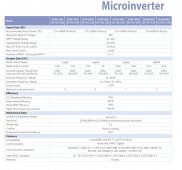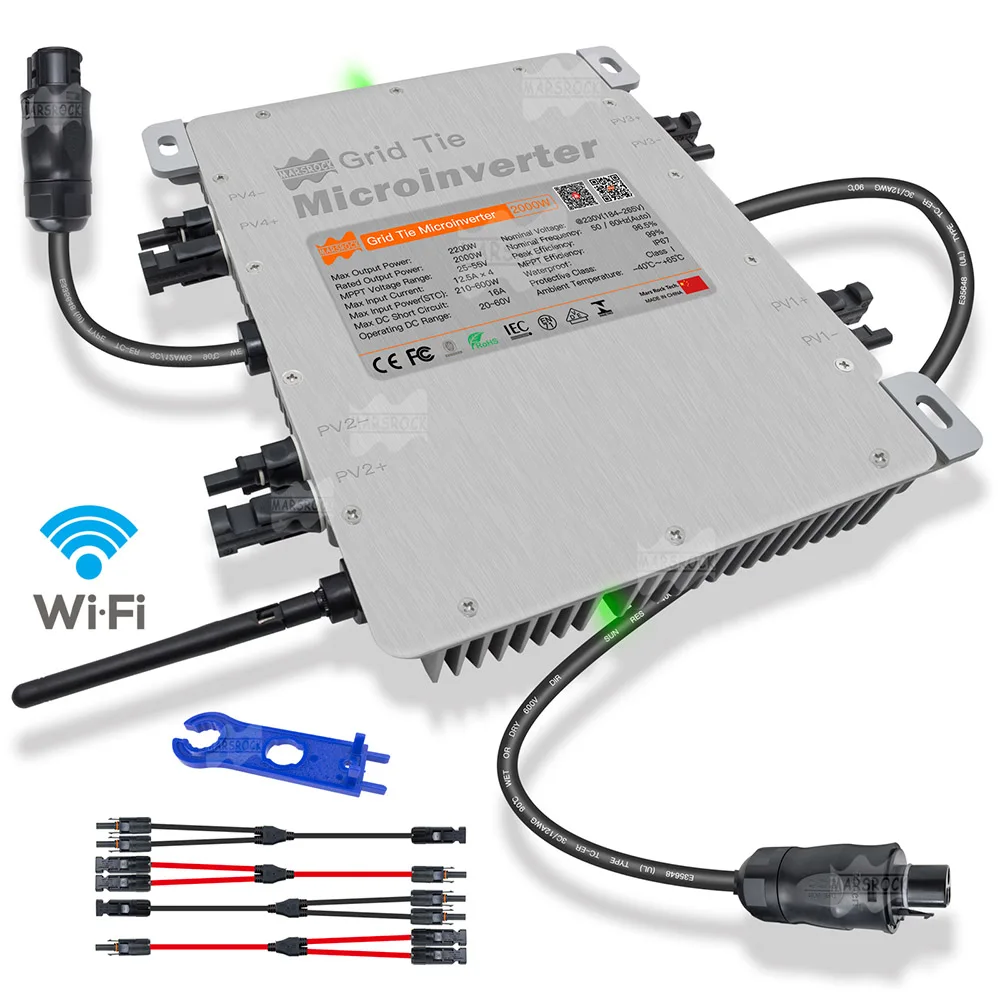I am using the EU version (230v, 50hz) but it seems they have a US version too.
The ‘EU’ version of the G3 is 230VAC but supports a range of 184-265VAC and 45-65Hz, while in addition to a similar ‘EU’ version, Deye seems to be offering 2 ‘US’ versions of their previous-generation G2:
SUN1200G-230-EU
184-265VAC
45-55Hz
SUN1300G2-US-208/240
183-264VAC
55-65Hz
SUN1300G
176-242VAC
55-65Hz
Compared to the 1300W version of the G3 model you have:
SUN1300G3-EU-230
185-265V
45-65Hz
This is basically the same as the SUN1300G2-US-208/240 with an expanded frequency range to also support the 50Hz grid of Europe.
They also list a US model of the G3;
SUN1300G3-US-220
176-242V
45-65Hz
So this seems to basically be the same as the SUN1300G with the same expanded frequency range to also support 50Hz grid signal.
So it appears to me that the G2 generation primarily differentiated US from EU versions based on frequency and since the G3 EU version seems to encompass the full frequency range needed to suppport either EU/50Hz or US/60Hz grid, I’m wondering whether the EU model you have will work fine here in the US is not…
The grid where I live in the US is 240V, so the ‘EU’ version of the SUN-G3 is actually a better fit for me than the lower-voltage ‘US’ version which would be maxing-out to support my grid voltage…
It's build quality seems good, and has massive heat dissipating fins.
It took me some time to setup the WIFI connection and get the app setup, but it's worth it. The details you get are on another level compared to those cheap no-name microinverters.
Not a big priority for me but if it is built in and ‘free’ (just an app), nice to have.
My existing mucroinvetter array (NEP) needs a ‘gateway’ to communicate with the Microinverters through PLC and it cost about $350…
I forgot to mention that I keep mine a few meters from my panels, where there is shade. The reason that I didn't mount it directly under the panels is because my panels are lying fairly flat on my pergola, and there is little airflow. Having that during the summer it can get very hot here in the Middle East, I prefer it be more ventilated and in the shade, just to prolong its lifespan.
I’m actually considering setting mine up in the basement ~20 meters from the panels, so overheating should not be an issue.
Depending on cost, I’m also planning on oversizing (so up to a 2000W Microinverter for a single 550W panel. The unused inputs will give me an expansion path for the future…
It will still heat up a bit during peak hours, but it works with no problem, and doesn't stop producing power.
What is the peak output you are getting from your unit? A full 2kW?
I got it from here:
Smarter Shopping, Better Living! Aliexpress.com

www.aliexpress.com
Thus is the EU version, but maybe the seller also has the US version.
It's around $400, but if you compare it to other microinverters, that have only one MPPT input, I think it's a good deal.
Thanks for the link. $400 is more than I’m hoping to spend but between stepping back to the 1300W or 1600W model of the G3 could get me closer to my budget.
You may want to get the "original" Deye branded one, depending on its availability on Amazon or Ebay.
I got mine from Aliexpress because I couldn't find it elsewhere with shipping to my region.
Good luck and keep us updated!
I appreciate to info and will report back when I have news, but it could be a while. I’m just starting the research phase for an expansion I’m planning for ~2023.
I have NEP Microinverters and saw their announcement for their ‘MacroInverter’ which had been the only option I had found (and has not yet reached the market).
These Deye G3 Microinverters mean I can start planning for a Microinverter-based architecture confident that there should be at least 2 quality products to choose from once the time comes.
If cost and power is equal, the NEP Macroinverter (600W) offers compatibility with my existing gateway, so that’ll probably be the way I’ll go. But if for the same price I can purchase a single-input 600W Microinverter from NEP I can get a 4-input or even 2-input Microinverter from Deye (or rebadger) with double or more the peak output level (meaning more headroom), that sounds like a wiser investment.
I just need to understand whether there is anything more to the whole ‘US’ versus ‘EU’ comparability thing other than voltage range and frequency…





